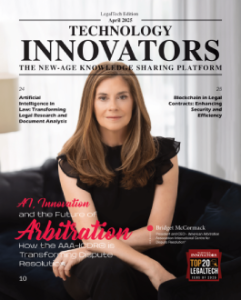Website: www.dm.ai
Management: Helen Fu Thomas, CEO
Founded Year: 2017
Headquarters: Los Angeles, California
Description: DMAI is building education products and services on a technology platform based on a unified theory of AI.
DMAI: Creating education platform with AI driven algorithm
Helen Thomas began her career at LeapFrog, where she was part of the team growing the global business exponentially and later became the founding CEO of LeapFrog China, after she successfully built educational businesses in Japan and South Korea. She then joined another startup Livescribe and launched the world’s first Smartpen worldwide. She also started two other companies- Bluefocus Communication Group of America and Touchjet USA, Inc. Most recently, she has been working with the founders of DMAI (Dark Matter Artificial Intelligence) and successfully launched their first education platform with AI driven algorithms to deliver the right content at the right time. She speaks on an array of topics. Excerpts:
Conception of DMAI
The first years of a child’s life are crucial to development, yet accessibility and cost cause many to enter kindergarten behind, observes Helen. 50% of Americans live in childcare deserts, a ratio of 3+ young people for every licensed childcare slot. Those with access, face staggering costs upwards of $13,158 annually. The pandemic exacerbated this issue when daycares/preschools closed, furthering the preparation gap — a learning disparity between those who did and didn’t receive early childhood education. 88% of children who don’t catch up by the third grade will struggle for the rest of their academic careers. “Our tablet costs $200 and offers personalized preschool. AILA Sit & Play was named the Best Tablet for Toddlers by Popular Science in July 2021.”
Strategizing for Edtech ecosystem
The biggest challenge our industry is currently facing is the lack of focus and high-quality toddler appropriate content geared towards preschool and kindergarten readiness and success. “There are countless tablets and preschool apps out there that are geared towards mindless tapping and swiping away of content without focusing on what a toddler needs in terms of high-quality educational content that is personalized for their learning success.”
Notes Helen, “In the learning process, content is introduced and extended before it is comprehended and refined by each learner. Spiral learning, however, takes time.” She observes that this is what AILA is doing differently than other competitors in this industry by delivering the right content at the right time focusing on the child’s learning journey to success. Access to high-quality educational content improves the lives of people and of their communities by providing enrichment and exposure at the right time, and by empowering learners, especially early on, through adaptive learning. “Most children don’t get an exceptional early education, but Animal Island Learning Adventure (AILA) is here to change that.”
Narrowing the preparation gap
In their efforts to foster even greater equity and inclusion, the company offers more than 5,000 free preschool learning sessions on our YouTube channel, enabling all children access to high-quality educational content for free. Underlying the importance of pre-school, Helen says that preschool education is essential, and with everything parents and caretakers are up against, an increasing number are turning to them for support. ‘Our metrics indicate we met a need felt by many families across our nation. Toddlers and preschooler learners have broadcast over 10 million Animal Island lessons on their AILA Sit & Play devices. Between the data from our devices and feedback we receive from parents and teachers, it’s clear our efforts are making progress toward narrowing the preparation gap.”
DMAI’s cognitive AI platforms
DMAI’s vision is to lift humanity by developing cognitive AI assistants and platforms and to make personal connections with individuals. Where others build standardized methods, we seek to create personalized ones, says Helen. “We at DMAI believe cognitive AI and personalized learning platforms can give people the motivation to advance their lives while empowering teachers and healthcare professionals to provide more personalized instruction and care.”
The Edtech Journey
“I am most passionate about the journey itself” says this passionate entrepreneur. “With our first product AILA Sit & Play, in just under two years, our AI driven cloud platform delivered over 10 million learning sessions, over 450,000 watch hours. Across channels including Amazon, Buy Buy Baby, Target, Best Buy and Walmart, we have earned 5000+ heart-warming reviews sharing how AILA has enriched the lives of children.”
Leadership traits
“I am a builder. As an entrepreneur and chief executive, I’ve been building businesses grounds up and taking them to the next level. At the same time, I devote myself to my two children.” Passionate and creative, Helen is focused on problem solving. “Thinking out of the box and being passionate about groundbreaking game changers made it possible for me to drive go-to-market strategies and deliver results to our users, employees, and investors.”
A word of caution to edtech startups
Technology revolutionizes education by providing 24/7 accessibility, real-time engagement data and personalized learning experience. “What I think EdTech innovators should watch out for in 2022 and beyond is the fundamental shift and transition from the traditional way of teaching to the new way of learning. Let the student be in the driver’s seat because every learning journey can be personalized. When a student is engaged and excited about it, the sky is the limit.”
The Success Mantras
Helen asks entrepreneurs to focus on the problems to solve – be the team’s advocate, be open minded and embrace changes.



 Company: DMAI
Company: DMAI




